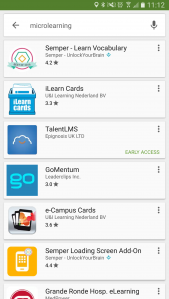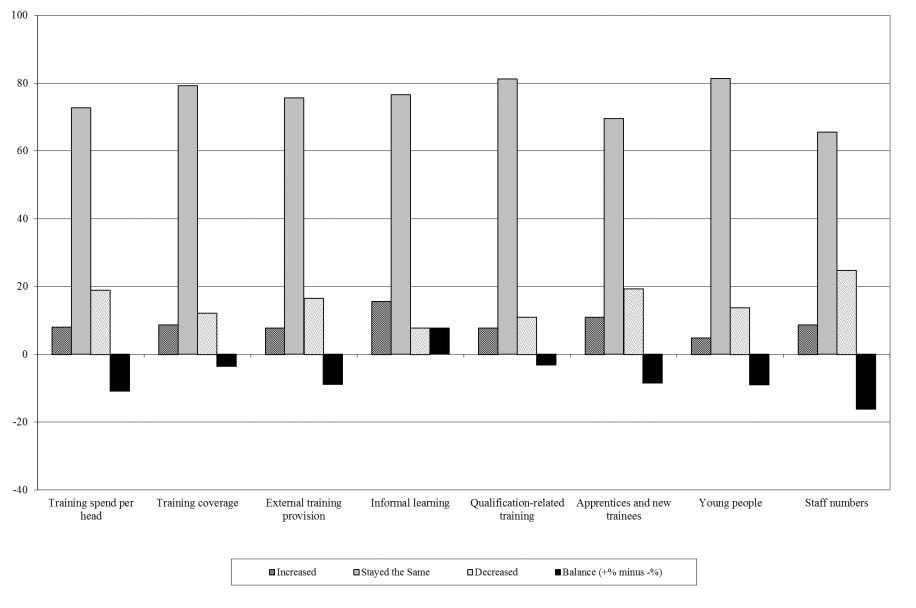5 reasons microlearning is more relevant than ever

How can microlearning techniques make the most of the modern workplace to help your learners be more effective at their jobs?
The principles of microlearning come from classic learning techniques. Flashcards have been used since the 19th century , with updates like the Leitner system for scheduling and prioritising cards introduced in the 1970’s.
Digital microlearning had a renaissance in the mid 2000’s when technology made it easier to incorporate simple learning objectives into rich media on a variety of devices. Over the last 10 years, the infrastructure and technology has developed to enable microlearning for everyone.
1. The technology is here
The percentage of the world’s population with access to the internet rose from 16% to 43% between 2005 and 2015. In that same period, smart phones were adopted faster than any technology before them , putting an ideal microlearning device into the hands of your learners.
With the rise in connectivity and bigger, higher quality screens has come a focus on rich media content like video. Microlearning often takes advantages of animation, video and audio to present information in a concise way.
The proliferation of different devices, operating systems, browsers and screen sizes has led to the adoption of new techniques like responsive web design . Learning designers can use a framework like Adapt to incorporate the same principles into microlearning content.
Making the same microlearning available across many different devices means it’s more useful than ever before.
Tracking learner’s interactions has also progressed. New standards like xAPI are ideal for microlearning. Recording learner’s actions in a Learning Record Store (LRS) can help them keep track and help designers improve their courses.
2. Brain science backs it up
It’s not just technology that has moved on and paved the way for effective microlearning. Now that techniques like spaced practice and nudge theory are gaining popularity, there are more people researching how they work.
Duolingo commissioned an independent study into language learning and it found that it’s online microlearning courses were significantly faster for beginner language learners than courses in a formal education setting.
A study based on an app that prompts you to answer questions when you unlock your phone or wait for an app to load was shown to improve the learners’ problem solving efficiency .
Will Thalheimer is a proponent of research-based learning design and microlearning techniques. His subscription learning website has some background on effective use of small chunks of learning.
3. Learners understand it
You don’t need to convince your learners that microlearning is a good idea. They’re already accessing and creating content using the same principles every day.
Look at the home screens and inboxes of your learners and you’re likely to find something that uses microlearning theories to teach, connect or entertain.

For learning designers and developers, many effective user interface patterns have been figured out by app and game makers already. Using patterns that are familiar to your learners will shorten the learning curve for the training and help them make the most of the content.
Learners don’t need to be convinced that this is a sensible way to take on new knowledge. Many have already bought into this theory in their personal learning journey.
Here are some of the more popular consumer microlearning services and apps:
- DuoLingo – Learn a language in short lessons on any device, 110,000,000 users
- Highbrow – Daily emailed courses
- Primer – Google’s marketing app
- Drops – Maximum of 5 minutes a day vocabulary training
4. It’s convenient
Towards Maturity report that 3 out of 5 learners struggle to find the time to take on training. Offering short pieces of content that cover one subject at a time makes sense for employees who are under pressure to make productive use of their time.
Making sure learners can get to the subject they need quickly and they’re not struggling to go through a whole module is a good way to help them use their training time more efficiently.
This chart from the gov.uk Training in the Recession report shows the effect of the 2008 recession on all areas of training.
Everything related to formal training sees a downturn, meaning less time will be given over to employees. The only area showing a net increase is informal learning, suggesting companies will depend on their learners to seek out opportunities for unofficial training.

Well-designed microlearning can be an important part of informal learning within an organisation. Providing small chunks of self-contained content makes it easy for your employees to find, benefit from and share them with their peers.
Microlearning courses can complement formal face-to-face or digital training. Providing a quick opportunity for time-starved learners to keep up to date and top-up their knowledge on the most relevant subjects.
Explainer animations:
These short video files are 2-3 minutes long and can be used at the start, middle or end of an elearning course.
They set out a problem or issue, explain why it needs to be dealt with, and offer solutions. Focusing on one issue from within a larger course and giving learners a piece of content they can bookmark and review is a good way to introduce microlearning.
Explainer animations can also be made available outside of the full module to allow quick reference to the content independent of the course.
5. It’s personalised
Personalisation and adaptive learning are two more recent trends in elearning that can take advantage of content that has been designed as small chunks.
A learning designer often starts by breaking down skills and knowledge into its constituent parts, by making them available individually you allow a learner to choose their own path to the objective.
Rather than a prescribed path or course of actions your learners have freedom to direct their own learning and seek out what’s most relevant to them. They can repeat parts that are challenging and skip quickly through the parts they find straightforward.
Next time you’re looking for online training, consider how elements of microlearning could benefit your learners.
Author: Alan Bourne, Head of Operational Excellence at Sponge